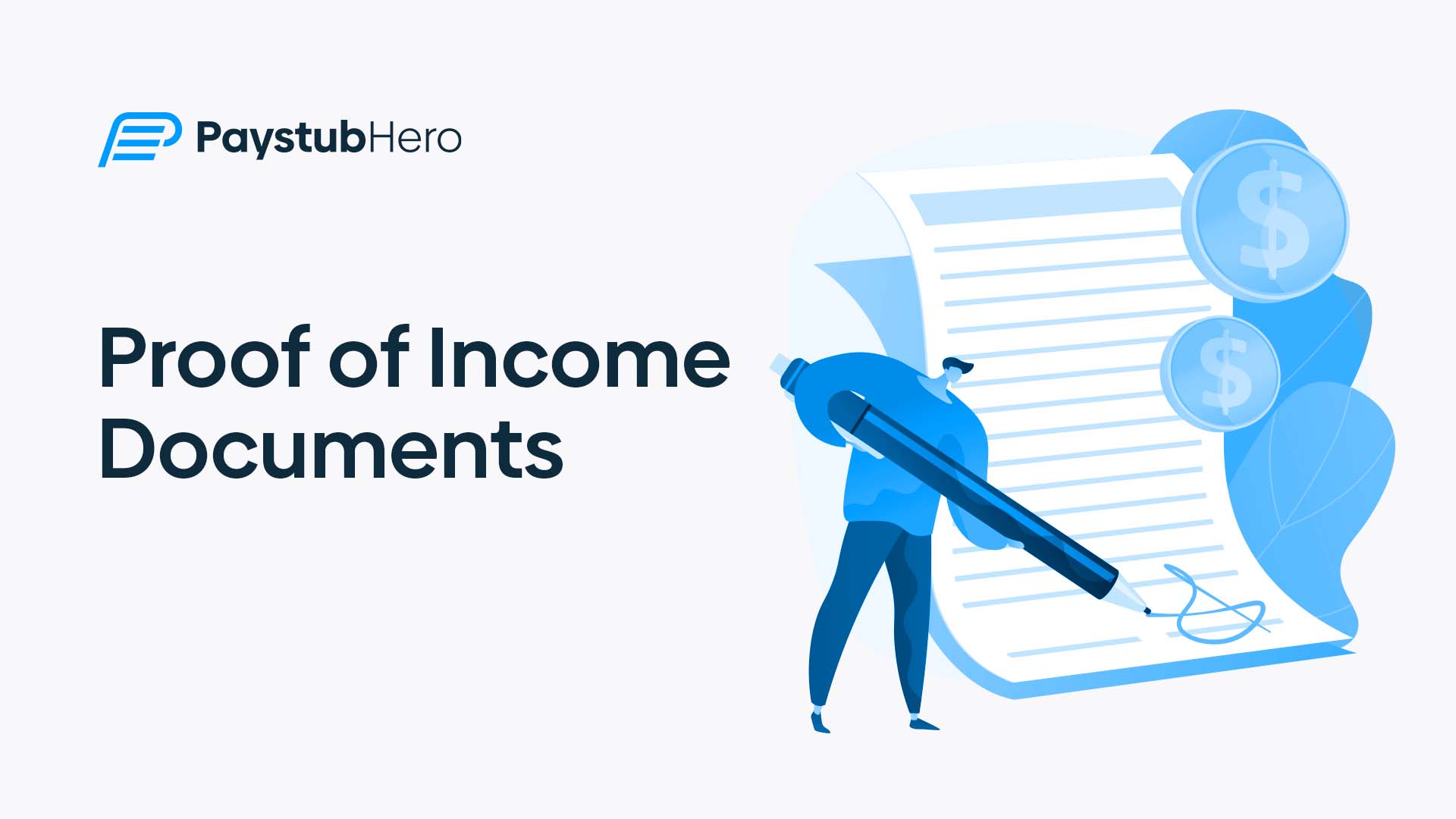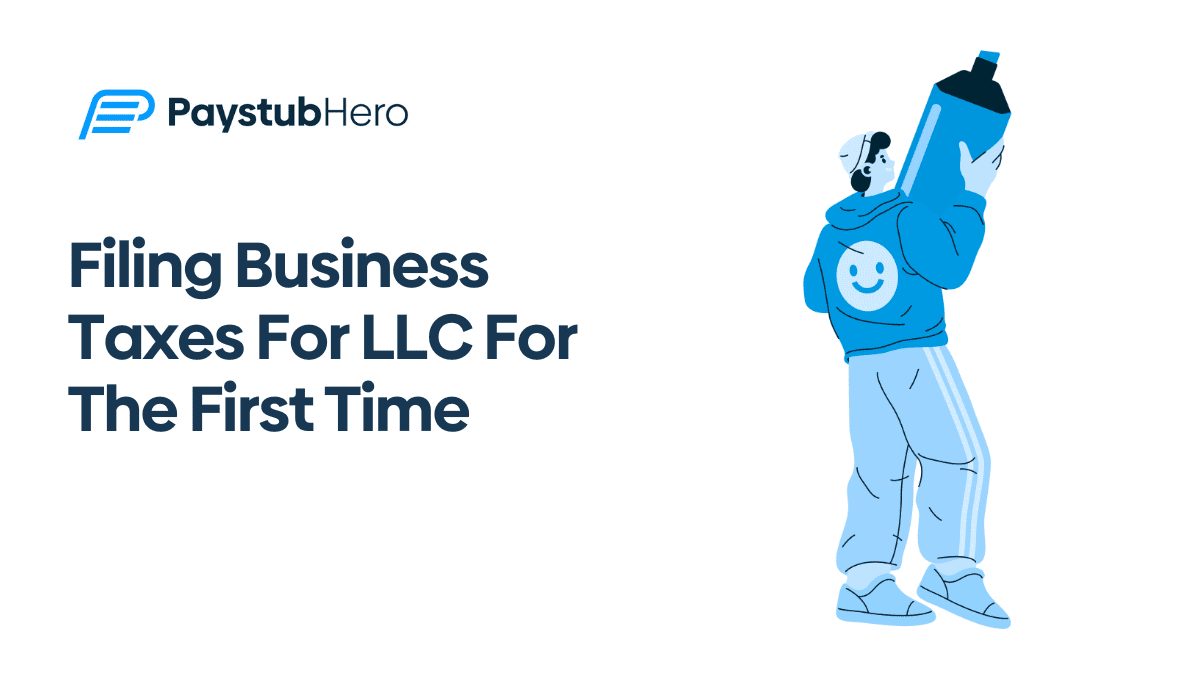Navigating through the modern world, especially as an independent professional, requires a unique set of tools. One such tool, often overlooked until the need arises, is a proof of income document.
If you’ve just begun your journey as a self-employed professional, an entrepreneur, or a freelancer, or you’ve been sailing these waters for a while but have found this topic murky, you might be scratching your head and asking, “What exactly are proof of income documents?”
Proof of income documents serve as your financial passport. They validate your financial status, painting a picture of your earnings for potential landlords, lenders, or government agencies.
Similar to how a passport serves as an accepted form of identification across the globe, proof of income documents provide an official record of your financial standing.
But these are more than just bland, cold financial records. They are the testament of your hard work, your entrepreneurial spirit, and your commitment to carving your path in a world where traditional employment is no longer the only game in town.
They showcase your reliability as a borrower, your credibility as a tenant, and sometimes, they’re the gateway to opportunities like travel or entrepreneurship grants.
Understanding the importance of proof of income documents and how they function in various aspects of your life is crucial. In essence, they are your financial resume, crucial when applying for loans, leasing apartments, or accessing specific government programs.
Just as a well-written resume can open doors to fantastic job opportunities, accurately prepared proof of income documents can facilitate many financial processes and opportunities.
Whether you’re a seasoned independent professional or someone considering stepping into the world of self-employment, understanding proof of income documents can make your journey smoother.
So let’s dive in and dissect these financial passports piece by piece, from what they are to how you can efficiently create them.
Proof of Income for Self-Employed Professionals: The Ins and Outs
Stepping into the world of self-employment brings both liberation and responsibility. Among the various responsibilities, one that often creates uncertainty is handling your financial documents, especially when it comes to proof of income.
Unlike traditional employment, where a W-2 form issued by an employer neatly summarizes income and taxes, self-employed professionals are often left to handle this on their own. This task can be daunting, especially when you’re focused on growing your business and serving your clients.
Proof of income for self-employed professionals can come in various forms. Tax returns, profit-and-loss statements, bank statements – these are all valid types of income proof that can be used.
However, collating these documents and ensuring their accuracy can sometimes feel like deciphering an ancient script.
It’s not just about collecting the right papers. You need to know how each document fits into the bigger picture. What story does your tax return tell about your earnings? How can a profit-and-loss statement capture your business’s financial health? When should you use a bank statement as proof of income, and what are the potential drawbacks?
While these are valid concerns, it’s important to remember that you’re not alone. Many have walked this path before you, and there are resources available to make the journey smoother.
Let’s explore the different types of proof of income and shed light on how each one can be utilized effectively.
Navigating the Landscape: The Different Types of Income Proofs
Understanding the different types of income proofs is akin to learning a new language, one that speaks volumes about your financial health. Each type of proof serves a unique purpose, applicable to various situations you might encounter on your entrepreneurial journey.
With this understanding, you can articulate your financial status with confidence, fostering trust with lenders, landlords, and other parties.
Typically, when we think about proof of income, the classic pay stub comes to mind. It’s like the bread and butter of income proof, summarizing your earnings, deductions, and net income in a straightforward manner.
It’s no surprise that pay stubs are commonly requested by various entities as they provide a quick snapshot of an individual’s financial situation.
For more substantial financial undertakings, like securing a mortgage, you might need to delve deeper into your financial archives. That’s where tax returns come in. These detailed documents offer a comprehensive view of your annual income, showcasing your earning history over a longer period.
On the other hand, there might be instances when other documents are insufficient or unavailable. This is where bank statements can play a pivotal role. They offer a glimpse into your cash flow, highlighting regular income and expense patterns.
However, it’s important to note that bank statements do not provide a detailed breakdown of income sources, which could be a drawback in some circumstances.
Each of these documents can serve as your financial ambassador, representing your economic profile to those who need to understand your financial standing. Knowing which one to present and when can save you unnecessary stress and facilitate your financial transactions.
So let’s dive deeper and understand how to utilize these documents effectively.
Table of Contents
- Introduction: Proof of Income Documents – A Financial Gateway
- Breaking Down Proof of Income for Self-Employed Professionals: The Ins and Outs
- Navigating the Landscape: The Different Types of Income Proofs
- Income Verification Letters: A Key Tool in Your Financial Toolkit
- Verification of Income: Making it Accessible and Effortless for Everyone
- The Magic Number: Understanding the 3 Types of Income
- Embrace Simplicity with Paystubhero: Streamlining Your Income Verification Process
Income Verification Letters: A Key Tool in Your Financial Toolkit
As self-employed professionals, freelancers, or small business owners, we often forget the importance of one crucial document – the income verification letter. This piece of paperwork, while seemingly mundane, can play a pivotal role in crucial junctures of your professional journey.
It’s as significant as a passport when traveling, providing necessary validation when you need it most.
An income verification letter, also known as a proof of income letter, is a formal document that verifies your employment status and income. Typically provided by an employer, it verifies the stability of your income. However, when you’re the employer and employee, this creates a unique predicament.
So how do you, as a freelancer or independent contractor, procure an income verification letter? Is it even possible?
The answer is a resounding yes. Despite the challenges it may seem to present, many solutions on the market today cater specifically to the needs of self-employed professionals like yourself.
Whether you’re preparing to rent an apartment, applying for a visa, or exploring business partnerships, an income verification letter can be your ticket to success. It’s an endorsement of your financial capability, your reliability, and your professional stature.
Understanding the importance of an income verification letter and how to acquire one is essential. But fret not, you’re not alone in this journey. Let’s explore how these letters work and how you can obtain one, even without a traditional employer.
Verification of Income: Making it Accessible and Effortless for Everyone
Everyone, regardless of their employment type, should have easy access to income verification. Yet, for many independent professionals, entrepreneurs, and freelancers, income verification often seems like a steep mountain to climb. The tedious task of gathering documents, cross-checking figures, and ensuring all information is up-to-date often drains precious time and energy that could be better spent growing your business or serving your clients.
However, income verification doesn’t have to be a hurdle. Instead, with the right tools, it can be transformed into a manageable, even effortless task. Just as technology has simplified many aspects of our lives, it can simplify income verification too, turning a once daunting process into a few clicks of a button.
The process of verifying income is more than just a mandatory step for financial processes. It’s a way to establish credibility, showcase financial stability, and often, an opportunity to reflect on your income patterns and financial health. It’s an essential task that, despite its initial complexity, brings with it significant advantages.
But where do you start, and how can you make this task more efficient? With a vast array of resources and tools at your disposal, there’s no reason to face this task unprepared.
Let’s delve into some practical ways to make income verification a breeze, ensuring it serves as a stepping stone rather than a stumbling block in your journey.
The Magic Number: Understanding the 3 Types of Income
When it comes to financial matters, it’s not just about the amount you earn; it’s also about the source of your earnings. In the world of income verification, there are three magic types of income that come into play: active income, passive income, and portfolio income.
Each type paints a distinct picture of your financial landscape, all vital for creating a comprehensive proof of income document.
Active income, the type most of us are familiar with, includes wages, tips, and any money earned from performing a service. It’s the income that directly correlates with your work hours, from the paycheck of a 9-5 job to the fees you earn from freelance projects.
On the other hand, passive income, often the holy grail for modern entrepreneurs, derives from rental properties, limited partnerships, or other enterprises where the person is not actively involved. It’s the income that works for you even when you’re not actively working.
Last, but definitely not least, is portfolio income. For those dabbling in investments, this type of income comes from dividends, interest, and capital gains from selling stocks or properties. It’s the fruit of wise investing and strategic financial planning.
Each of these income types provides a unique insight into your financial health and stability. Understanding these types and how they contribute to your overall income is crucial when generating proof of income documents, particularly for self-employed individuals with varied income sources.
Let’s delve deeper into each type, shedding light on their significance and impact on your financial portfolio.
Embrace Simplicity with Paystubhero: Streamlining Your Income Verification Process
For anyone who’s ever felt overwhelmed by the complexities of income verification, know that there’s a solution at hand. Welcome to Paystubhero – a robust and efficient software designed with the unique needs of entrepreneurs, freelancers, and independent contractors in mind.
We understand that income verification can often seem like an uphill battle, but with our platform, it doesn’t have to be.
Say goodbye to tedious manual calculations and hours spent organizing documents. At Paystubhero, we’re all about simplifying the process. We offer an intuitive solution that makes generating proof of income documents as easy as 1-2-3.
Our platform was developed to cater to those who might not have access to pricier platforms like ADP or Gusto due to their focus on large corporations.
Our goal is to empower independent professionals and small businesses, eliminating hurdles in their journey towards financial transparency. We believe that you shouldn’t have to sacrifice your time or peace of mind to produce the documents you need to grow your business or personal finance.
Are you ready to step into a new era of income verification? Experience the revolutionary simplicity and efficiency that Paystubhero brings to the table. It’s time to bid farewell to stress and welcome a straightforward approach to managing your financial documents.
Let’s dive into how Paystubhero can transform your income verification process, giving you more time to do what you do best.
Frequent Asked Questions
- What can be used as a proof of income?
- Tax returns, pay stubs, and bank statements can serve as proof of income. Additionally, for self-employed individuals, profit-and-loss statements are also commonly used.
- Can I use my bank statement as proof of income?
- Yes, bank statements can be used as proof of income as they show your cash flow, including income and expenses. However, they may not provide a detailed breakdown of income sources.
- How do I make a proof of income statement?
- You can create a proof of income statement using a payroll software like Paystubhero. Alternatively, you can compile tax returns, bank statements, or profit-and-loss statements if you’re self-employed.








